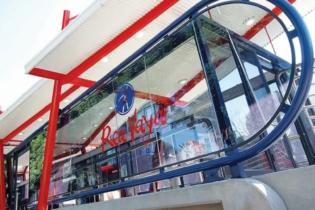Doing it better and faster, and being consistently more reliable than your competitors, is the means to building a sustainable business and securing the future.
Since containerisation emerged to revolutionise freight transport in 1976, turnaround time has been the key indicator of a port’s capability and ability to maintain high levels of productivity and performance management in servicing port users. The most important objective for a port’s container terminal is to increase its throughput and reduce the amount of time a vessel spends in port. Achieving this objective is dependent on the effectiveness of allocating and scheduling key resources, such as quay cranes, yard cranes, berths and trucks. And, to do this effectively, careful planning and efficient organisation is required so that queue build up and congestion costs are avoided. For the shipper, vessel turnaround time relates directly to berthing costs and increment voyage costs for vessel itself. For the customer, within the entire supply chain process, high turnaround time ultimately translates into lower input costs and a lower goods price for the customer’s customer. Now, with globalisation an entrenched reality, trade and the subsequent breakdown in trade barriers, growth in marine transport is at an all time high, and growing. This has led to fierce competition between port operators to attract port users who, by default, bring with them all the accompanying economic benefits. Therefore, port operators must achieve shorter turnaround times for vessels in order to benchmark high productivity and performance. At the same time, berthing costs need to be competitive and kept as low as possible. In southern Africa, South Africa has had it all its own way for many decades, while civil war and conflict raged in Namibia, Angola and Mozambique. Now that peace prevails in these countries, they are rebuilding their economies and, along with that, road, rail, port and airline infrastructure. South Africa’s ports will soon be facing stiff competition from the Port of Walvis Bay, the Port of Luanda and the Port of Maputo as they develop and promote their transport corridors to Africa’s interior. Even the Port of Dar es Salaam is gearing up to take on the rest of southern Africa. When these ports are geared up and running, South Africa will no longer be the ‘gateway’ to Africa.We would do well to remember that the shortest route is not always the best route. However, if it is efficient and cost effective, it will be.
Slowest, yet the most expensive
A recent study by the Ports Regulator, looking at port costs and productivity, revealed Durban to be the most expensive among 12 international ports researched. This was at a time when Transnet’s National Ports Authority (TNPA) was applying for an 11.91% tariff increase for the 2011/12 financial year.
Total marine and infrastructure costs for an average container vessel visiting the Durban port once a month amount to $182 151.30, compared with an average of $86 251.58 at the other 11 ports. After Durban, the second and third most expensive ports are in the USA. Long Beach, California, charges $175 230.48 and Los Angeles charges $164 431.77. The cheapest ports are Kaohsiung in Taiwan, with a total fee of $18 609.65 per tanker per visit, and Antwerp at $25 605.46.
The research is available for public comment on the Ports Regulator’s website. The solution
So, the question is, how do we increase productivity? Besides labour and management issues, port container terminals need to enhance their planning and operational capabilities by deploying innovative materials handling equipment and state-of-the-art technology in order to optimise the container terminal logistic process. That much is clear.
The other, perhaps more important, thing is attitude – worker attitude, shaped by an understanding of what productivity is, and means, and why it is necessary. If we are to compete with the rest of the world and soar with eagles, we can’t afford to flap around with the turkeys. We also need to remember that there are two harbours up the west coast and another two up the east coast that are gearing up to become serious competitors. This is not the time to be complacent.








